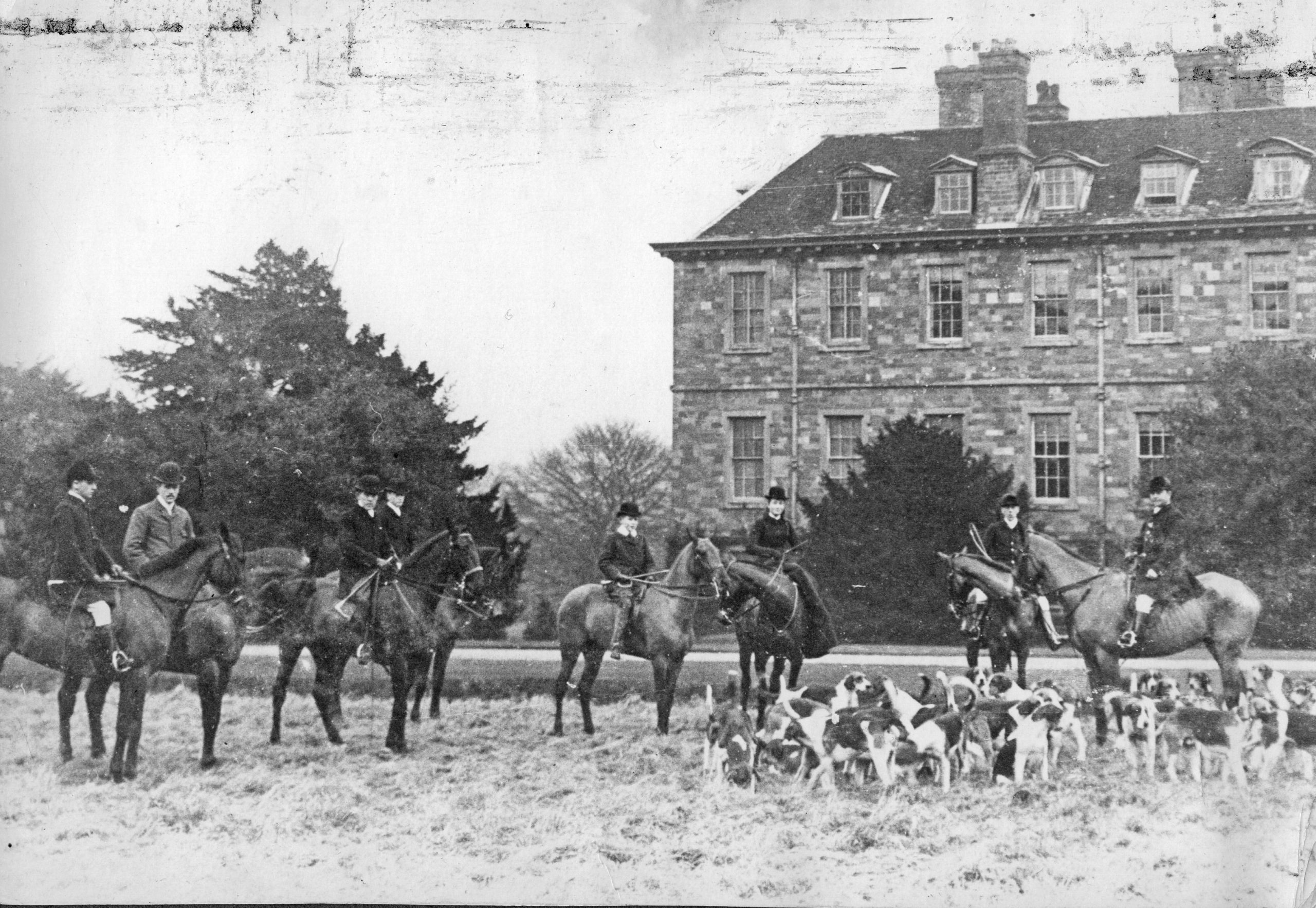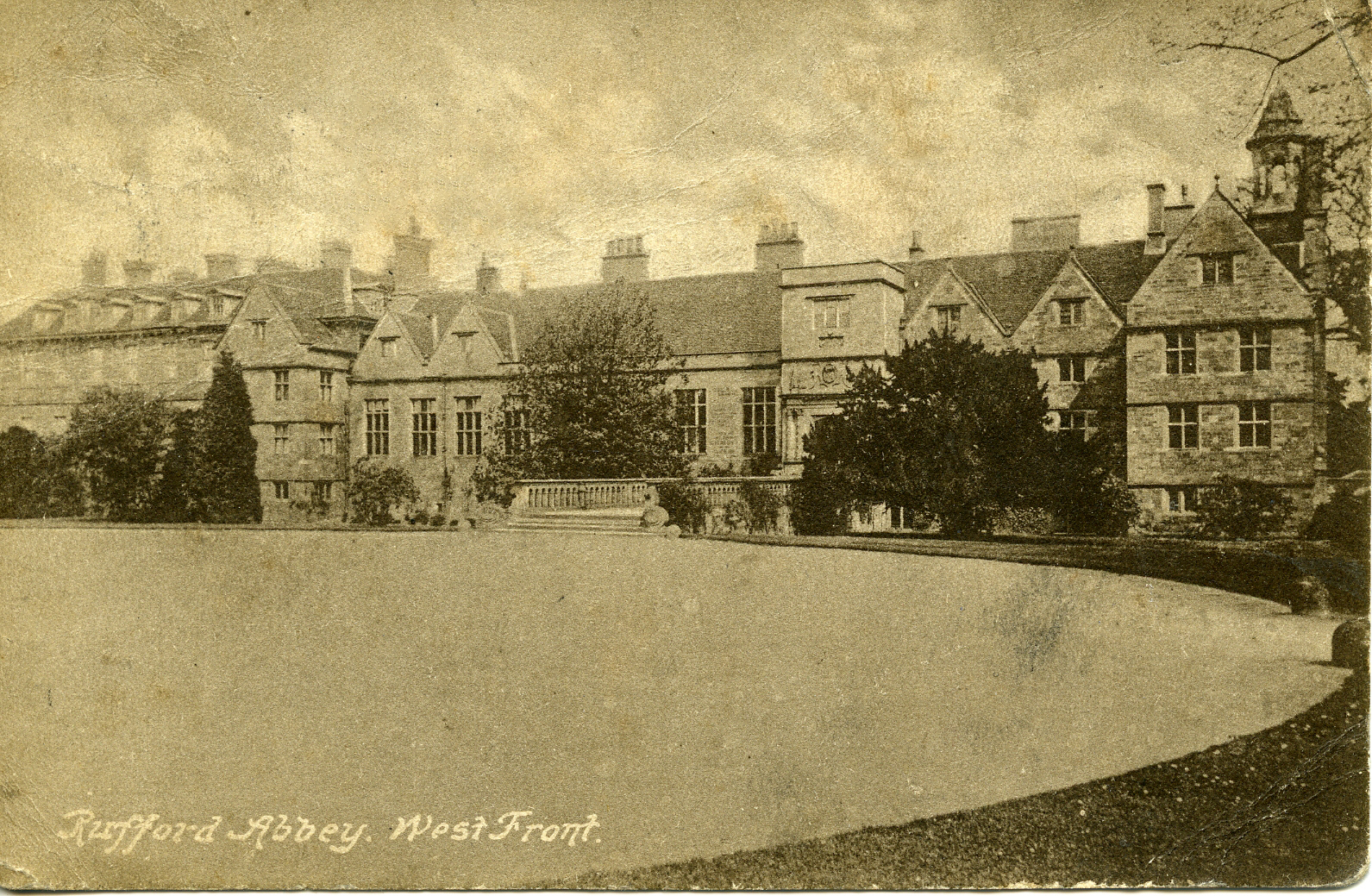 Originally a Cistercian abbey, it was partly demolished in the 16th century after the dissolution of the monasteries, and converted to a minor country house estate. Mr Smith talked about the succession of owners beginning in the 16th century with George Talbot, 4th Earl of Shrewsbury, until the 20th century when the property passed to Sir George, the 3rd Baron Savile, who was only 12 years old, at which time the trustees took the decision to sell the estate. After changing hands several times, and being used for military purposes during the 2nd world war, it was purchased by the Notts. County Council and has now become a park open to the public, owned by Nottinghamshire County Council and managed by Parkwood Outdoors in co-operation with English Heritage.
Originally a Cistercian abbey, it was partly demolished in the 16th century after the dissolution of the monasteries, and converted to a minor country house estate. Mr Smith talked about the succession of owners beginning in the 16th century with George Talbot, 4th Earl of Shrewsbury, until the 20th century when the property passed to Sir George, the 3rd Baron Savile, who was only 12 years old, at which time the trustees took the decision to sell the estate. After changing hands several times, and being used for military purposes during the 2nd world war, it was purchased by the Notts. County Council and has now become a park open to the public, owned by Nottinghamshire County Council and managed by Parkwood Outdoors in co-operation with English Heritage.
History of Rufford from the 1500s
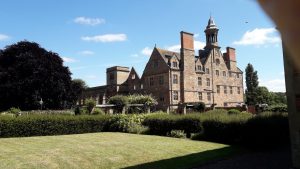
Originally a Cistercian abbey, until closed as part of Henry VIII’s suppression of the monasteries, and quickly acquired by George Talbot, 4th Earl of Shrewsbury. The 6th Earl was responsible for partly demolishing and converting the west range of monastic buildings into a house. His second wife was Bess of Hardwick who engineered a marriage at Rufford between her daughter, Elizabeth, and Charles Stuart, knowing that any child of Charles Stuart had a claim to the succession of the English throne.after the death of the childless Elizabeth. I. Their daughter Arabella Stuart, born in 1575, was sixth in line to the English throne.
In 1610 Arabella married William Seymour, and the fact that both parties were claimants to the throne caused such panic at court that they were deliberately separated shortly after their marriage. Arabella was sent to the Tower of London where she died in 1615.
Sir William Savile, 3rd Baronet of Thornhill, (1612-1644) was the leader of Royalist forces in Yorkshire during the Civil War, and made Rufford Abbey the seat of the Savile family after he burnt down the Savile’s original home, Thornhill, in Yorkshire, to prevent its being occupied by a Parliamentarian garrison, but was killed in action in 1644.
In 1679 George Savile, lst Marquess of Halifax constructed a new north wing on the site of the abbey church, containing reception rooms and a long gallery. Also built was a large stable block to the south of the house.

Acknowledgement Wikidata
In 1700, without male issue, the peerage became extinct, and the baronetcy passed to the Saviles of Lupset. The years between 1729 and 1845 saw many improvements, The lake was created, to power the new corn mill and to extend the grand water features on the estate which included an ornamental canal and waterside walks and features near the house. In the 1850’s a sawmill was built on the east side of the existing corn mill in order to use the remaining mill wheel. Also constructed were a brewhouse, water tower, coach house, bath house and five ice houses, of which 2 remain.


Ice House

 Rufford Saw Mill & Lake
Rufford Saw Mill & Lake
The estate eventually passed to John Lumley Savile, the 8th Earl of Scarborough (1788-1856) who never married, but fathered 6 children. He employed Anthony Salvin to redevelop the house.
Captain Henry Lumley Savile inherited the estate in 1856. He bred and owned the 1872 Derby winner Cremorne.

He was succeeded by Augustus William Savile who served as Queen Victoria’s assistant master of ceremonies. John Savile, lst Baron Savile (1818-1896) became owner in 1887. He was a British diplomat who served as Ambassador to Italy from 1883 to 1888, and was interested in art and archaeology. The fountain near the Bath House is an enlarged replica of a lamp found by him while on an archaeological dig at Nemi.
 His nephew John Savile Lumley-Savile (1854-1931) succeeded to the title. He was a diplomat and sportsman, an enlightened landlord respected by tenants and staff, being one of the best shots in the country and a keen huntsman, owning several expensive riding horses which were kept at the stable block near the house. The Prince of Wales, a family friend, regularly stayed at Rufford and enjoyed the shooting parties, the Rufford Hunt and the Doncaster Races. This continued after he became King Edward VII.
His nephew John Savile Lumley-Savile (1854-1931) succeeded to the title. He was a diplomat and sportsman, an enlightened landlord respected by tenants and staff, being one of the best shots in the country and a keen huntsman, owning several expensive riding horses which were kept at the stable block near the house. The Prince of Wales, a family friend, regularly stayed at Rufford and enjoyed the shooting parties, the Rufford Hunt and the Doncaster Races. This continued after he became King Edward VII.

The Prince of Wales, later the King made many visits to Rufford Abbey, As reported below,
Nottingham Evening Post – Thursday 14 September 1905
“THE KING AT RUFFORD ABBEY. SECOND DAY OF THE VISIT. the morning was bright yesterday, there were not wanting signs of a break in the weather. The sun clouded over in the forenoon, ominous clouds coming up from the southwest with portents rain, and by mid-day there was a strong wind blowing up of dost, which made matters anything but pleasant for those who were wending their way Station with the object seeing the Kinar on his arrival there from Rufford Abbey with Lord and Savile and the house party from the Abbey, on their way to Doncasier for the most important race day of the week. 1113 Majesty again enjoyed a walk in the gardens at Rufford during tho early part of the forenoon, and es on Tuesday, motored Ollerton Station in his large Mercedes car. in which several of the house party also occupied seats.”

The Prince of Wales, Ronald & Margaret Greville, Lord & Lady Savile and George & Alice Kepple. 1910

In 1931 the property passed to George Halifax Lumley Savile, the 3rd Baron (1919-2008) who during the 2nd world war was a captain in the Duke of Wellington’s Regiment (West Riding). The decision was taken in 1938 to sell the family seat at Rufford Abbey. Sir Albert Ball bought much of the land and quickly sold the house to the eccentric aristocrat Harry Clifton who resided in Jamaica. A caretaker was left in the house but, with no maintenance since the Savile days, its upkeep was minimal. Within weeks Rufford was requisitioned by the War Office during the Second World War to house troops, the Cavalry Brigade of the Leicestershire Yeomanry, a tank regiment and the 4th Battalion of the Coldstream Guards. About 20 army huts were constructed and these later housed Italian prisoners of war. After the war the huts were used for a while for Civil Defence purposes before being demolished. Rufford was handed back to Harry Clifton who considered demolition the best policy in view of the parlous state of the building, but the Nottinghamshire County Council refused all requests to demolish Rufford and purchased the Abbey and 150 acres of grounds from him, in 1952. In 1956 the late 17th century north and east wings were demolished and the remaining west range and south service wing put into the care of the Ministry of Works. The undercroft which was the lay brothers’ refectory in the 12th century building, remains, and became the servants’ hall in times of the Savile family.

By James Hill, CC commons wikimedia
At the present time the park, which is open to the public, is owned by Nottinghamshire County Council and managed by Parkwood Outdoors in co-operation with English Heritage.
In 1851. A gang of forty or so poachers assembled in Rufford Park as mass action against what was perceived to be the unfair monopolising of game-hunting rights by wealthy landowners. The poachers were attacked by ten gamekeepers and, in the ensuing battle, one of the gamekeepers was badly injured and later died of a fractured skull. Four of the poachers’ ringleaders were arrested and each subsequently sentenced to deportation and fourteen years of penal servitude for manslaughter. The incident gave rise to the popular ballad “Rufford Park Poachers”, which depicts the poachers as bold heroes.
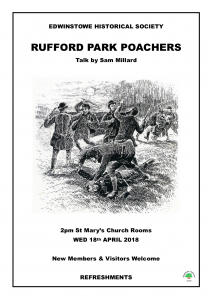
Like many old houses, Rufford reputedly had ghosts but when asked about any apparitions, the third Lord Savile had replied that over the years he had spent nights in different parts of the Abbey but had never had any luck! If any ghosts do remain, will they hark back to the days when royalty visited the abbey, dined in splendour, relaxed in the long gallery with the Beauvais tapestries and green damask and gilt furnishings, danced in the ballroom, strolled in the beautiful gardens, or perhaps attended the races at Doncaster, joined the shooting parties or had a day’s hunting.
In the centre of the hall was an enormous fireplace of stone, with Elizabethan carving. Crossing the dais at the upper end, there was a door leading to the Library, a fine room with a ceiling of great beauty. Above the bookcases were walls are covered with rich red velvet brocade, forming a good background to the pictures and china. Over the large stone fireplace hung a fine portrait of the Prince of Wales in Garter robes, painted by the late Augustus Savile, H.M. Marshal of the Ceremonies, who, besides being of great social fame, was, like his brother the late Lord Savile, an artist of considerable talent.

Portrait of the Prince of Wales panted by Augustus Savile.

Rufford estate workers

Gardeners in Rufford kitchen garden
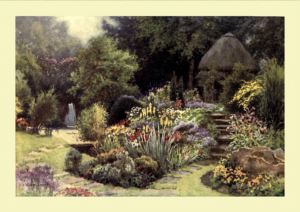
Rufford Japanese Garden
Memories of Rufford by Frank Eyre
Straw Burning

What extra cost the corn today Bramble patch where he played as a lad
None that I’m aware of in any way All gone now sad, sad, how sad
Fifty four birds a thousand bees What, the barn nearly went, the house too
Moles, mice and such as these Good God that would never do
Count not on the tally as he speaks
-*- -*-
The stately old oak along the way Gusting wind, soaring heat, scoring pain
It only gave shade anyway No time to cry
Three hundred paces hawthorn It’s said the eyes may never see again
The low knotted yew It matters not
Sheltered stock as the North wind blew No loss is sight to one so blind
by Frank Eyre
BUTTERCUP MEADOW
The hands of man have touched this scene
This old meadow mixed brown, gold, patchy green
Passing this way once pure joy
Catching the eye was their ploy
Fresh to the mind on every hand
Now swept away as planned
Gone those buttercups once spreading here
Gone now those waves of floating gold
No more for wandering eyes to hold
Lost to turning page of time
Gone from sight
But not from mind
Rufford 1984 by Frank Eyre
 Edwinstowe Historical Society
Edwinstowe Historical Society
